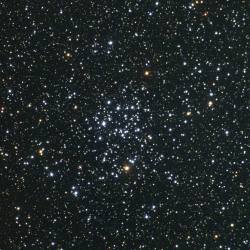

For urban and suburban dwellers, practicing binocular astronomy can sometimes be discouraging because of the lack of faint marker stars to help locate deep sky objects. Right now, early evening dark skies are the perfect opportunity to spot the brightest star in the night sky – Sirius – and let it lead you on to some deep sky gems! So print off this article, grab your binoculars and a good friend and get outside!
Just after sky dark, head outside and look basically south for the “Scorching One”. Even if you don’t use binoculars, this 8.6 distant light year beauty sparkles and twinkles like a true diamond. Even though it’s only the atmosphere which causes the effect, Sirius’ beauty has been noted throughout ancient history in both culture and mythology. Small wonder, it’s twice as large as our own Sun and 25 times more luminous! One of the earliest star charts done by Ptolemy recorded Sirius’ position and in 1676 Edmund Halley noted its movement. While today we understand that stars with large proper motion mean they are closer to us than further away, it was definitely an eye-opening experience for early astronomers.
Now, open your eyes wide by using binoculars of any size and center on Sirius. Move slowly south about one average binocular field until you see a compression of stars. Congratulations! You’ve just spotted Messier Object 41. As incredible as it may seem, this bright cluster of stars may have also been noticed by Aristotle as far back as 325 BC… without modern optics! Spanning about 25 light years across, there are about 100 stars which are true members of the cluster. if you thought Sirius was bright, then take a close look for a reddish central star. It’s 280 times brighter yet than Sirius! Thank heavens it’s about 2,300 light years away or there would be no such thing as a “dark sky”.
Now head back to Sirius and let’s take a hop Northeast just a little more than two binocular fields. Do you see that small heart-shaped collection of stars? It’s Messier Object 50. Although this galactic cluster contains about twice as many stars as M41, they are so faint they are difficult to see from light polluted skies. If you have larger binoculars, you can probably even spot some color differences between members.
Let’s get Sirius again. This time we’re headed almost due east about another two binocular fields. Messier Object 47 is quite bright by comparison, and with good reason; it’s much closer than the other two clusters. This time we’re only looking about 1,600 light years away. Like its other two star-studded companions, it’s about the same age, but has fewer stars. This particular cluster curiosity was an instance where Charles Messier messed up. He recorded its position wrong! For now? Have a look around. These bright clusters are easily seen from most locations and all you have to do is…
Binocular astronomy: Get Sirius!
Let’s dive into one of those cosmic curiosities that's bound to blow your mind: how…
The majority of the universe remains unmapped, but we have a potential window into it…
NASA engineers are pressing ahead with preparations for the Artemis II mission unless someone tells…
It’s not uncommon for space missions to be tested here on planet Earth. With the…
Some of our Solar System's moons have become very enticing targets in the search for…
Gateway’s HALO module heads to the U.S., on its long path to orbiting the Moon.…